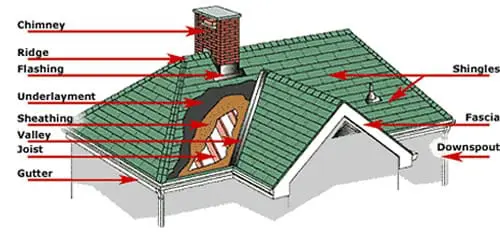When it comes to roofing, wear and tear are inevitable over time. Whether due to storm damage, leaks, or just the natural aging of the materials, you might find yourself in a situation where you need to address roofing issues. However, you may wonder if it’s possible to replace only a portion of your roof rather than the entire thing. In this article, we will explore the feasibility of replacing part of a roof, the factors to consider, and the steps involved in this process.

Understanding Partial Roof Replacement
Is It Possible?
Yes, it is possible to replace only part of a roof. This approach, known as partial roof replacement or a roof repair, can be a cost-effective solution when the damage is localized or limited to a specific section of your roof. Instead of tearing off the entire roof, you focus on the damaged or deteriorating area.
Factors to Consider
Before You Begin
Before deciding to replace part of your roof, consider the following factors:
1. Extent of Damage
Evaluate the extent of the damage to your roof. If the damage is confined to a specific area, such as a section damaged by a fallen tree or a leak around a vent, it’s a good candidate for partial replacement.
2. Age of the Roof
Consider the age of your existing roof. If the roof is relatively new and the damage is isolated, it’s more likely that a partial replacement will suffice. However, if your roof is near the end of its lifespan, it might make sense to replace the entire roof for long-term durability.
3. Roofing Material
The type of roofing material you have can impact your decision. Some materials, such as asphalt shingles, can be challenging to blend seamlessly when replacing only a portion. Other materials, like metal or tile, may allow for a more integrated appearance.
4. Budget
Partial roof replacement can be more budget-friendly than a full roof replacement. Consider your budget and how much you are willing to invest in repairs or replacement.
Steps for Partial Roof Replacement
Getting Started
Here are the steps involved in replacing part of a roof:
1. Inspection and Assessment
- Identify the Damaged Area: Begin by identifying the specific area of the roof that requires replacement. Inspect both the exterior and interior of your home to determine the extent of the damage.
- Consult a Professional: It’s advisable to consult a roofing professional to assess the damage accurately and provide recommendations. They can help you determine if partial replacement is feasible.
2. Material Matching
- Match the Roofing Material: If possible, match the new roofing material with the existing roof. This will ensure a cohesive appearance. If an exact match is unavailable, consider complementary colors and styles.
3. Remove and Replace
- Remove Damaged Shingles or Sections: Carefully remove the damaged roofing material. This may involve lifting existing shingles or tiles and removing the underlayment in the affected area.
- Install New Roofing Material: Install the new roofing material in the area that was removed. Follow proper installation guidelines to ensure a watertight seal and a secure fit.
4. Blend and Finish
- Blending and Aesthetic Considerations: Ensure that the new roofing material blends seamlessly with the existing roof. Pay attention to the alignment and overlap of shingles or tiles to maintain the roof’s integrity and appearance.
5. Inspection and Maintenance
- Final Inspection: After the replacement is complete, conduct a thorough inspection to ensure that the new section of the roof is installed correctly and does not have any visible issues.
- Regular Maintenance: Continue with regular roof maintenance to extend the lifespan of your entire roof and address any potential issues promptly.
Conclusion
Partial roof replacement is a viable solution when your roof experiences localized damage or wear and tear. However, it’s essential to assess the extent of the damage, consult a professional, and match the new roofing material with the existing roof for a cohesive appearance. By following the steps outlined in this article, you can address roofing issues effectively and prolong the life of your roof.



Leave a Reply